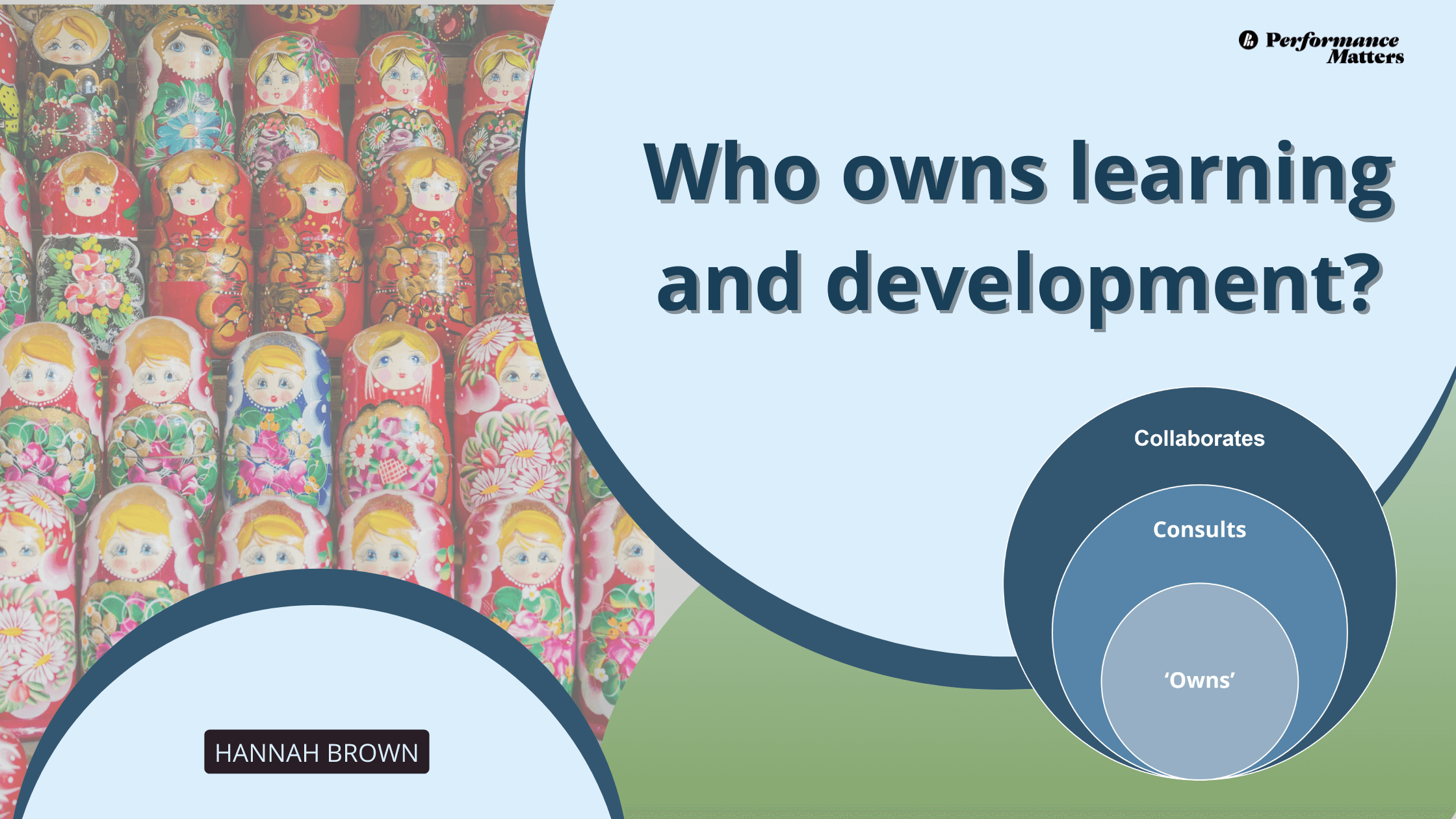A regional municipality had a change of leadership. The new Chief Administrative Office (CAO) wanted to focus on leadership development as one of the strategic pillars of the organization. The Manager, Learning and Development started assessing the leadership development programs in place and how effective they would be at meeting this new mandate. She discovered there were several pockets in the organization that provided training. This resulted in duplication of effort and missed opportunities where things fell through the cracks. She had a small team and wondered how they could possibly address this, given what they were already working on.
Years ago, I worked with the municipality described in the story above. I’m currently working with my local municipality, a department in the Federal Government and a national law firm. A thread that appears through them is the question of learning ownership. In different ways, they have a version of the story above – training is offered by numerous groups, has ranging quality and has different levels of effectiveness. Often, employees feel stressed because they are asked to attend programs inconsistently – some months might be course-heavy, and others might be light. The lack of coordinated implementation and the inconsistent experience increases employee stress and workload as they try to navigate different learning timelines and approaches.
When I help clients create a learning strategy for their organization, I guide them through assessing how the learning function supports the overall organization, which employee groups they support, and help them understand their environment. If learning ownership is an issue, it comes up when assessing the environment.
I share this model to help clients clarify the learning function’s role and priorities. I like to think of it like Matryoshka dolls that stack inside of each other.

Owns
In the very inside circle, we have what learning and development own. This might be a leadership development program or an onboarding program for new employees. Maybe learning and development own the interpersonal skills training – giving feedback, communication, etc. The programs and initiatives inside this circle represent what you are responsible for. You and your team own it.
Consults
The next circle is where you have a consulting role. You don’t have direct ownership of these programs. This is where other areas of the organization are responsible. Perhaps your I.T. department is responsible for training as part of a system’s launch. Or, maybe your product group offers training with new product launches and upgrades. They are content experts, so it makes sense that they are responsible for the training. However, they typically don’t have learning or instructional design expertise. This is where your team supports them. You can consult on the learning design and provide guidelines for delivery. Your consulting support improves the quality and consistency.
Collaborates
Finally, the outside circle is where you collaborate. This is where your team will have the least direct involvement, but they’re still involved. Perhaps your organization is large enough that your team designs training and another team delivers it. Your design team may collaborate with the facilitation team at various stages in the design process.
There’s a subtle distinction between consult and collaborate. With consult, you provide guidelines and directions that others need to follow. With collaborate, you offer opinions and perspectives that others can choose to incorporate.
Perhaps obvious, but worth stating – anything outside of the largest circle you’re not responsible for. This is where you draw the line so your team can focus on what it does well and can manage the workload. Clearly identifying these programs and initiatives helps reduce the bottleneck if your team takes on too much.
Identifying learning ownership is one part of developing a learning strategy. It’s often a need I help my clients identify and a recommendation they include in their strategy. Of course, identifying it is the easy part! Defining what belongs in each circle requires discussion, negotiation and agreement across the organization. In the end, however, clarifying what your team owns and where it consults helps create a consistent employee learning experience, which increases the training impact and decreases employee stress. Defining where your team collaborates and what is completely outside your scope helps your team manage its workload.
In case you missed it
I’ve shared some additional posts online. Here they are in case you missed them.
- Learning development ownership – (video link)
- Needs Assessment approaches – (video link)
- Learning Strategy – Survey to understand the audience – (video link)
- When to use focus groups for a learning strategy – (video link)
Training that Clicks book – I’m writing a book this year about virtual training. I’ve been posting about the process every Friday on LinkedIn.
Follow this hashtag #bookbyhannah to learn about my journey. Follow this hashtag #trainingthatclicks to learn about this book specifically.



